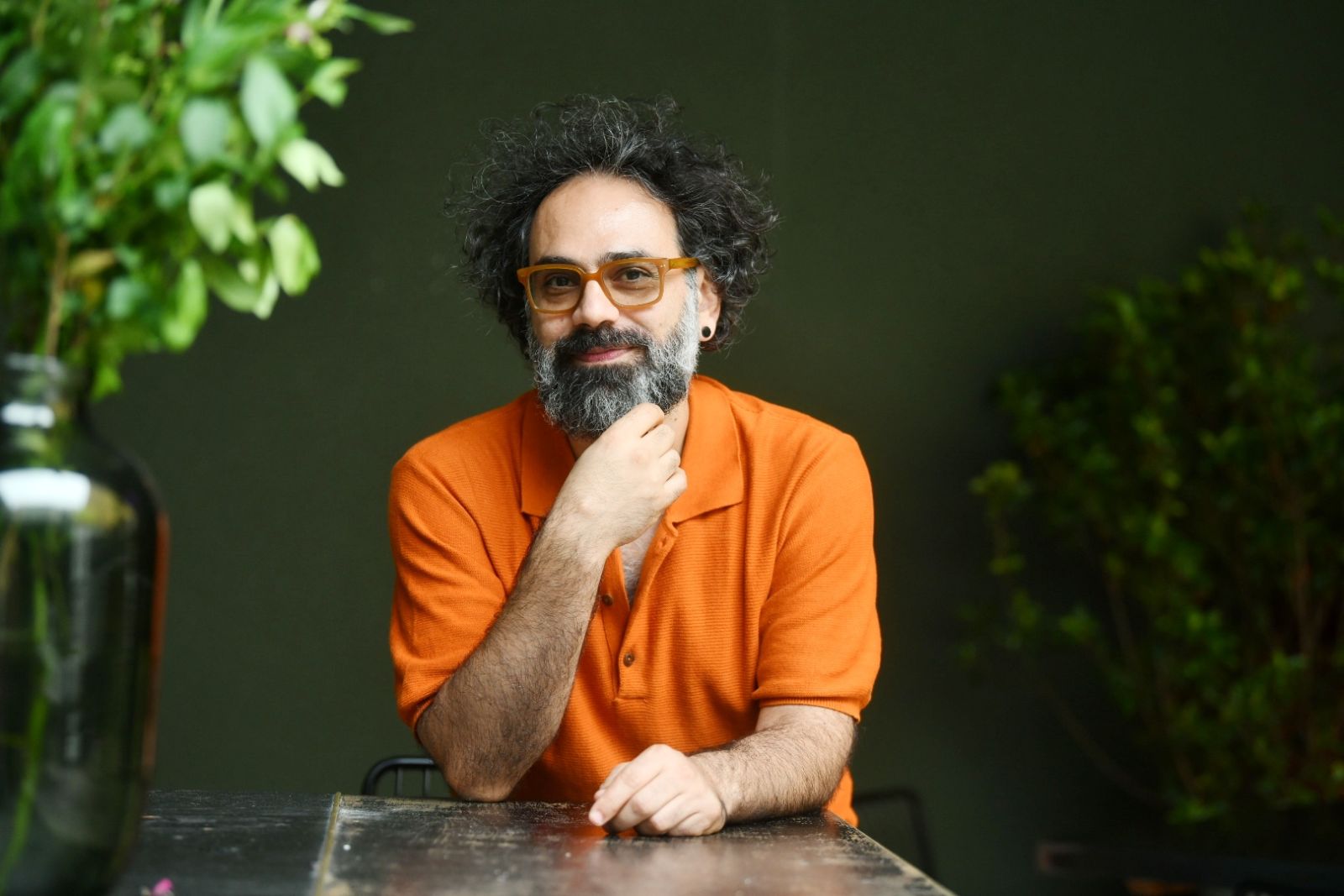Omar Rajeh on dance: 'It's a questioning of our daily life, of these infinite possibilities of the body'
Expect the line between audience and dancers to blur in Lebanese-French company Maqamat’s interactive outdoor performance, Dance People. Choreographer Omar Rajeh talks to Dom Czapski about being a creative in a conflict zone and why we all need to make a little room for each other in this world
.JPG)
As a teenager, Omar Rajeh loved physics and mathematics. ‘I was obsessed... I feel this may be what drew me into dance. Today, I feel I’ve gone beyond just thinking about dance from a physics perspective, in terms of dynamics and kinetics.’ He tells me this over Zoom from a cavernous rehearsal studio in Liège, Belgium, where he and nine performers are refining his new show Dance People, which is about to have its world premiere at Edinburgh University’s Old College Quad as part of the International Festival.
Over the course of Rajeh’s early career, the path from science to choreographer zigzagged but his interest in dance never waned. Rajeh grew up in a village in the mountains of Chouf, south-east of Beirut, where he learned folk dance. Almost by accident, he found himself at the age of 16 choreographing a performance for 18 dancers. ‘We kind of organised ourselves: we had a company, nine boys, nine girls.’ He enrolled at the American University Of Beirut to study graphic design, switched to theatre at the Lebanese University (‘because there was no dance degree in Lebanon’) and later took a dance MA in Surrey, beginning a PhD he eventually abandoned. He founded his dance company Maqamat Dance Theatre in Beirut, in 2002. By then, he’d realised he wasn’t cut out for a life in academia. ‘I felt more “poetic”, in the sense that I like composition. Composition is just as important as play.’
Rajeh fits the label of political artist, although not by choice. His creative development was inseparable from Beirut’s turbulence. Choosing to dance in a country emerging from civil war ‘seemed the most revolutionary, provocative, and confrontational thing you could do’. Wars soak into daily life; no art practice can stand apart. ‘I like thinking of dance as a questioning of our daily life, a questioning of these infinite possibilities of presence, infinite possibilities of the body.’

Conflict can often be crudely reduced to questions of space, and space is Rajeh’s raw material. ‘It’s very much about the distribution of space, how that defines our relationships. You find yourself in one set‑up and want to shift the dynamic into something else.’ In Beytna (2016), the audience shared a meal on stage. In Dance People, they will roam the university quad for 90 minutes surrounded by live dance, music and video graphics. The aim, he says, is a performance that is thought of as a meeting rather than a spectacle.
The DNA of his current work can be traced back to his early days as an artist in Beirut, when he returned from London to start his own dance company. He founded Bipod in 2004, a festival that grew into a major regional hub for dance, drawing international companies like Sasha Waltz, Wayne McGregor, Akram Khan and others. Out of that also came Citerne Beirut (a venue), Takween (a training lab) and recently citerne.live (a new digital platform), all evidence of a longer-term philosophy: to keep dance porous, collaborative and future-oriented even while Lebanon’s infrastructure collapsed.
Dance People’s world premiere at Edinburgh is the latest experiment in that same ecosystem logic, cultivated now from his base in Lyon (he relocated his company there after being forced to shut down Citerne Beirut in 2019) but forever looping back to urgent questions that go beyond Lebanon. On the subject of Gaza, Rajeh says that what alarms him even more than the horror going on there is the normalisation of suffering to new generations. ‘That’s why Dance People is really about the question of gathering; about the question of respect, about the question of space. Because there is space for everyone. On a wider scale, for me it’s really a question of, “where are we going today? What kind of world do we want to live in? How can we protect spaces of tolerance?”’
This might all sound highly abstract, but Rajeh is adamant his works aren’t meant to be intellectual puzzles. To him, dance is simply a confirmation of presence, and audiences are partners in this act. In Old College Quad this summer, they’ll test this partnership. One courtyard, dozens and dozens of bodies, and, as ever with Rajeh, the hope that rearranging space might just rearrange our future.
Dance People, Old College Quad, 7–10 August, 8.30pm; main picture: Yannick Blancard.